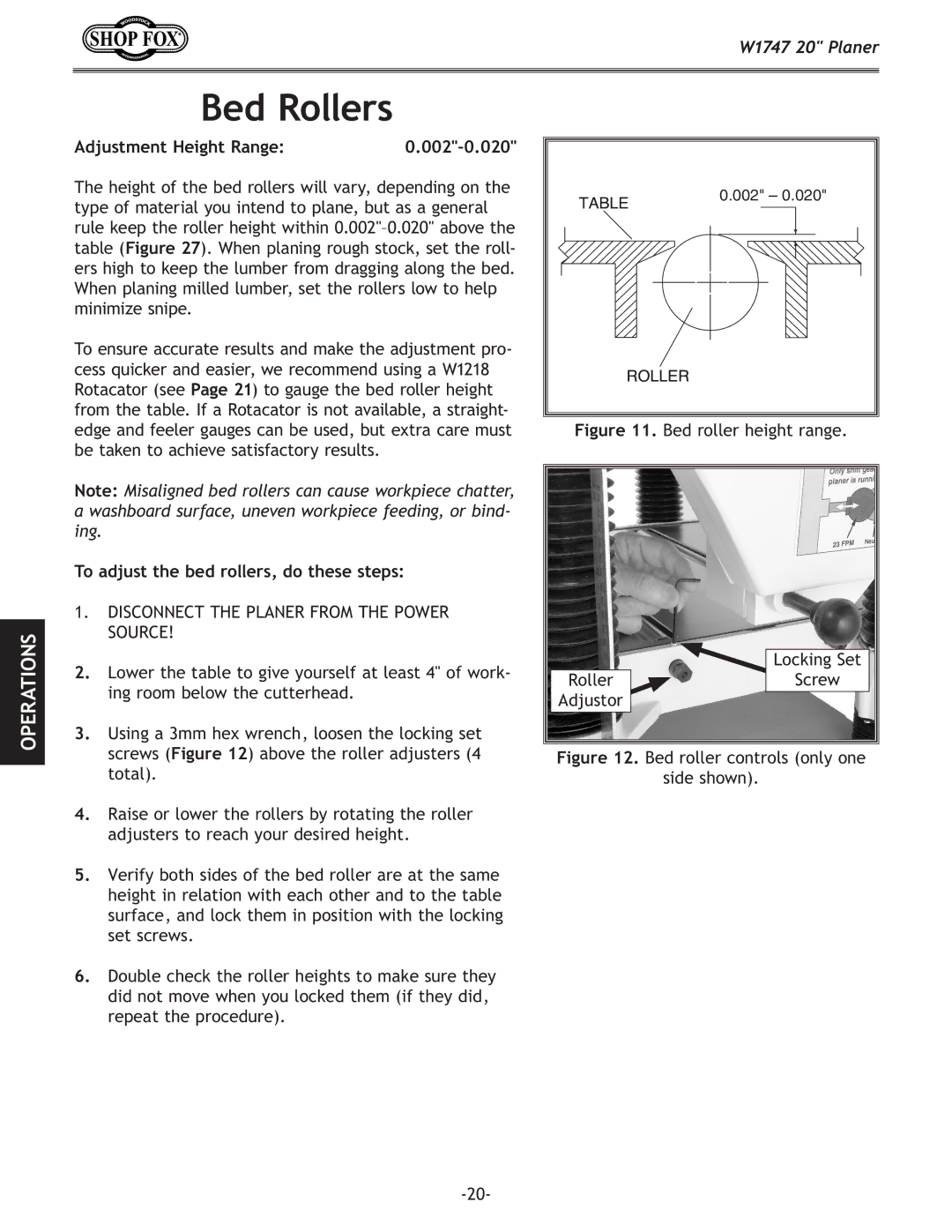
W1747 20" Planer
OPERATIONS
Bed Rollers
Adjustment Height Range: |
|
The height of the bed rollers will vary, depending on the type of material you intend to plane, but as a general rule keep the roller height within
To ensure accurate results and make the adjustment pro- cess quicker and easier, we recommend using a W1218 Rotacator (see Page 21) to gauge the bed roller height from the table. If a Rotacator is not available, a straight- edge and feeler gauges can be used, but extra care must be taken to achieve satisfactory results.
Note: Misaligned bed rollers can cause workpiece chatter, a washboard surface, uneven workpiece feeding, or bind- ing.
To adjust the bed rollers, do these steps:
1.DISCONNECT THE PLANER FROM THE POWER SOURCE!
2.Lower the table to give yourself at least 4" of work- ing room below the cutterhead.
3.Using a 3mm hex wrench, loosen the locking set screws (Figure 12) above the roller adjusters (4 total).
4.Raise or lower the rollers by rotating the roller adjusters to reach your desired height.
5.Verify both sides of the bed roller are at the same height in relation with each other and to the table surface, and lock them in position with the locking set screws.
6.Double check the roller heights to make sure they did not move when you locked them (if they did, repeat the procedure).
���������������
Figure 11. Bed roller height range.
| Locking Set |
Roller | Screw |
Adjustor |
|
